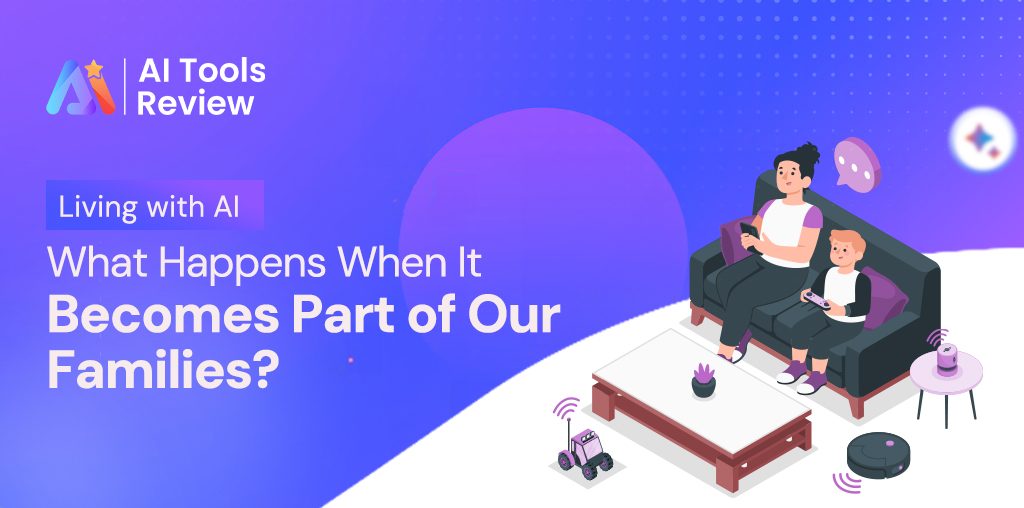The gentle hum of the robot vacuum cleaner mingles with the sound of children’s laughter. “Alexa, when will Mom be home?” asks seven-year-old Emma, while a smart display shows Dad the perfect temperature for tonight’s casserole. This isn’t a scene from a futuristic movie – it’s everyday life for many families in 2025. As artificial intelligence weaves itself into the fabric of our domestic lives, we’re witnessing a exciting and challenging transformation.
The Quiet Revolution at Home
Remember when smart homes were just about turning lights on and off? Today’s AI-enabled homes anticipate needs, manage resources, and even help with homework. Virtual assistants have evolved from simple command-takers to becoming ambient presences that learn family routines, preferences, and quirks. They’re not just tools anymore – they’re becoming part of the family dynamic.
The New Family Member
Sarah Chen, a working mother of three, shares her experience: “Our AI assistant knows each family member’s schedule, and dietary restrictions, and even helps the kids practice their Mandarin. Sometimes I wonder if it knows my children’s daily routines better than I do.” This sentiment echoes across households where AI has become an invisible but integral family member.
Impact on Family Relationships
The integration of AI into family life brings both benefits and challenges:
Strengthening Connections
- AI handles routine tasks, giving families more quality time together
- Smart systems help maintain connections with distant relatives through enhanced communication
- Family memories are preserved and organized through AI-powered photo and video curation
New Challenges
- Children developing emotional attachments to AI assistants
- The need to balance screen time and AI interactions with human connection
- Privacy concerns as AI systems learn intimate family details
Teaching Values in an AI World
Parents face new questions: How do we teach children to interact respectfully with AI while understanding its limitations? Should we thank the AI assistant, for modeling politeness? Jennifer Martinez, a child psychologist, suggests: “We need to help children understand that while AI can be helpful and friendly, it’s still a tool. It’s about finding the right balance between utilizing technology and maintaining human connections.”
The Generational Divide
While younger family members often embrace AI naturally, older generations might struggle with this technological integration. However, stories emerge of grandparents mastering smart home systems to stay connected with grandchildren or using AI health monitors to maintain independence while giving family members peace of mind.
Privacy and Trust in the AI Era
The presence of AI in our homes raises important questions about privacy and data security. Families must navigate the trade-off between convenience and protecting personal information. Setting boundaries becomes crucial: which spaces remain AI-free? What family moments stay private?
Emotional Intelligence and AI
Perhaps the most intriguing development is how AI systems learn to read and respond to family emotions. They can detect stress in voices, suggest mood-lifting activities, or alert parents to unusual patterns in children’s behavior. While this can be helpful, it also raises questions about emotional dependency and authenticity.
Looking Forward: The Evolution of Family Life
As AI continues to evolve, we’re likely to see even deeper integration into family life. Predictive AI might help prevent family conflicts, support children’s educational development, or assist in maintaining healthy family dynamics. But the core of family life – love, understanding, and human connection – remains irreplaceable.
Finding the Right Balance
The key to successfully integrating AI into family life lies in thoughtful implementation:
- Establish clear boundaries for AI usage
- Maintain device-free family times and spaces
- Teach children to think critically about AI interactions
- Use AI to enhance, not replace, human relationships
Wrapping Up
The integration of AI into our families isn’t a prospect – it’s happening now. While it brings unprecedented convenience and support, the true challenge lies in harnessing its benefits while preserving the essence of human family connections. As we navigate this new territory, we must remember that AI should serve to strengthen, not substitute, the irreplaceable bonds that make a family.
The question isn’t whether AI will become part of our families, but how we choose to shape its role in our homes. By approaching this integration mindfully, we can create a future where technology enhances rather than diminishes the rich tapestry of family life.


